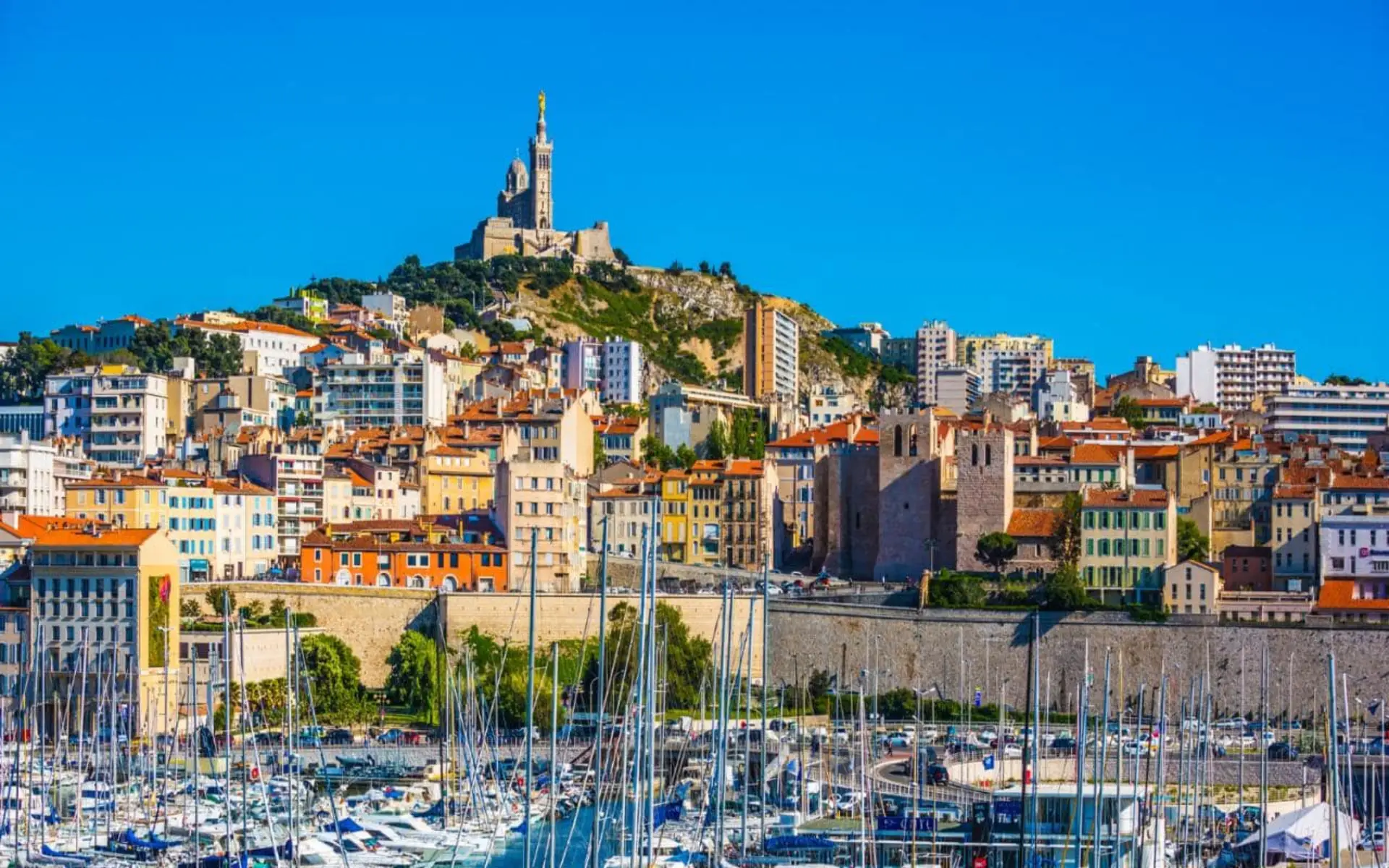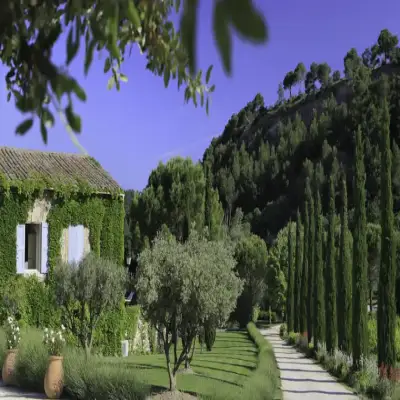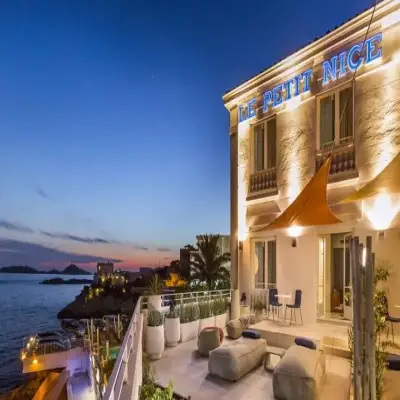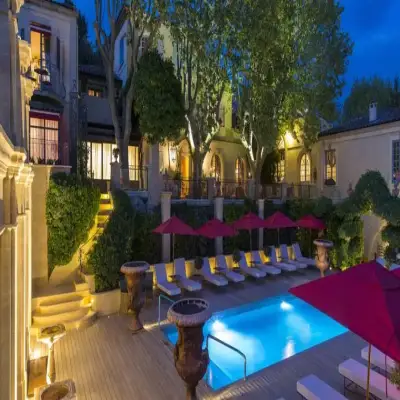
Boutique Hotels in Marseille
Notre Dame de la Garde
This church is one of Marseille’s most famous landmarks, situated on the top of a hill overlooking the city and the sea. It is most easily accessed by bus, since going there on foot means having to face the weary climb to the top, and there are buses that depart every twenty minutes or so from the Vieux Port and take you right up to the church’s doors. It is free to visit, and the mosaic interior, as the beautiful views of the city, are incredibly impressive.
Les Calanques
Weather permitting, a relaxing boat ride to the beautiful Calanques – a stretch of coast between Marseille and Cassis – is a must for anyone visiting the city, especially in the summer. Stunning views, beautiful beaches, and a refreshing sea breeze are some of the highlights that travelers will be able to enjoy whilst visiting the Parc National des Calanques. Another option is to cycle around the area and look at the landscape on your own, or even to ride a bike to one of the beaches and then rent a kayak or canoe and paddle out to the cliffs.
Vieux Port
The Vieux Port (Old Harbor) is probably the most important part of Marseille, where all tourists head to take photos, eat some fresh fish and seafood, watch the boats or ride the Ferris wheel. It is part of the city’s old town and a great location from which to head to all of the city’s main attractions, so it’s definitely worth a visit. Sunsets during the summer are particularly awe-inspiring, so stick around the area until early evening for some beautiful views.
Musee des Civilisations de l’Europe et de la Mediterranee
Also known as the MuCEM, this is the city’s best museum. It explores Mediterranean civilizations and history, and provides an insightful look into the way they developed until they became what they are today. Apart from exhibitions there are also mini films or lectures to help visitors better comprehend Mediterranean culture, and the museum spans three entire buildings. Gods, spices, travel routes and gardens are just a few of the diverse topics covered in this eclectic museum.
Cathédrale de la Major
Marseille’s cathedral is of course worth visiting, being one of the city’s most important buildings. Overlooking the sea, this spot is perfect for views and photographs. Its imposing structure, composed of several domed towers, with the highest reaching a height of 16 meters, and the use of green and white limestone might remind some of Florence’s Duomo, but the interior has been decorated in a completely different style. Fortunately the cathedral is also free to visit.
Le Panier neighborhood
Marseille’s Old Town is one of the most picturesque neighborhoods visitors will find anywhere in France. It is easily accessible from the Vieux Port, as it is situated on a nearby hillside. It was first inhabited in 600BC, when the Greeks settled here, so it truly is the oldest part of the city. It is a colorful, multicultural neighborhood that blends the many influences that are present nowadays in Marseille, making for a unique place in which to spend an evening or to go for a walk.
Palais Longchamp
The majestic Palais Longchamp is the site of the city’s Musée des Beaux Arts, the oldest museum in Marseille. The gallery is home to an impressive collection of work by Italian and Provençal artists, and most of the paintings and works of art date from the 17th century to the present day. Apart from the beautiful artwork, the palace also has a splendid park that locals flock to when they want to enjoy the good weather, as it is one of the few green areas in the city center.Château d’If
Those who have read Alexandre Dumas’ The Count of Montecristo will undoubtedly find the name of this island familiar. Although some guides suggest the events actually happened, the fictional count was never actually imprisoned here, although this makes Château d’If no less fascinating: visitors will be able to learn all about the 16th-century castle’s history as a prison for real life political enemies of the state. There are boats that leave daily from the Vieux Port.
Whilst France in general might be known for its elegant and sophisticated cuisine, Marseille is particularly known for its pastis – an anise-flavored aperitif – and its abundance of fresh seafood. Both its restaurants and bars, therefore, are a great way to get to know the culture of the city better, and to explore what French gastronomy has to offer – with everything from bouillabaisse to wines on offer.
La CanebièreClose to the Vieux Port and Le Panier, La Canèbiere is another of Marseille’s most important areas. It is the city’s biggest avenue, and it represents the wealth that Marseille once possessed and gladly displayed. The huge, ornate buildings and elegant hotels that once stood on each side of the street have now mostly been converted into restaurants, shops or offices, but they still conserve some of their previous grandeur. The avenue stretches almost one kilometer from the Vieux Port, and leads to the fun Capucin neighborhood, among others.




